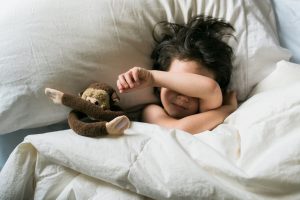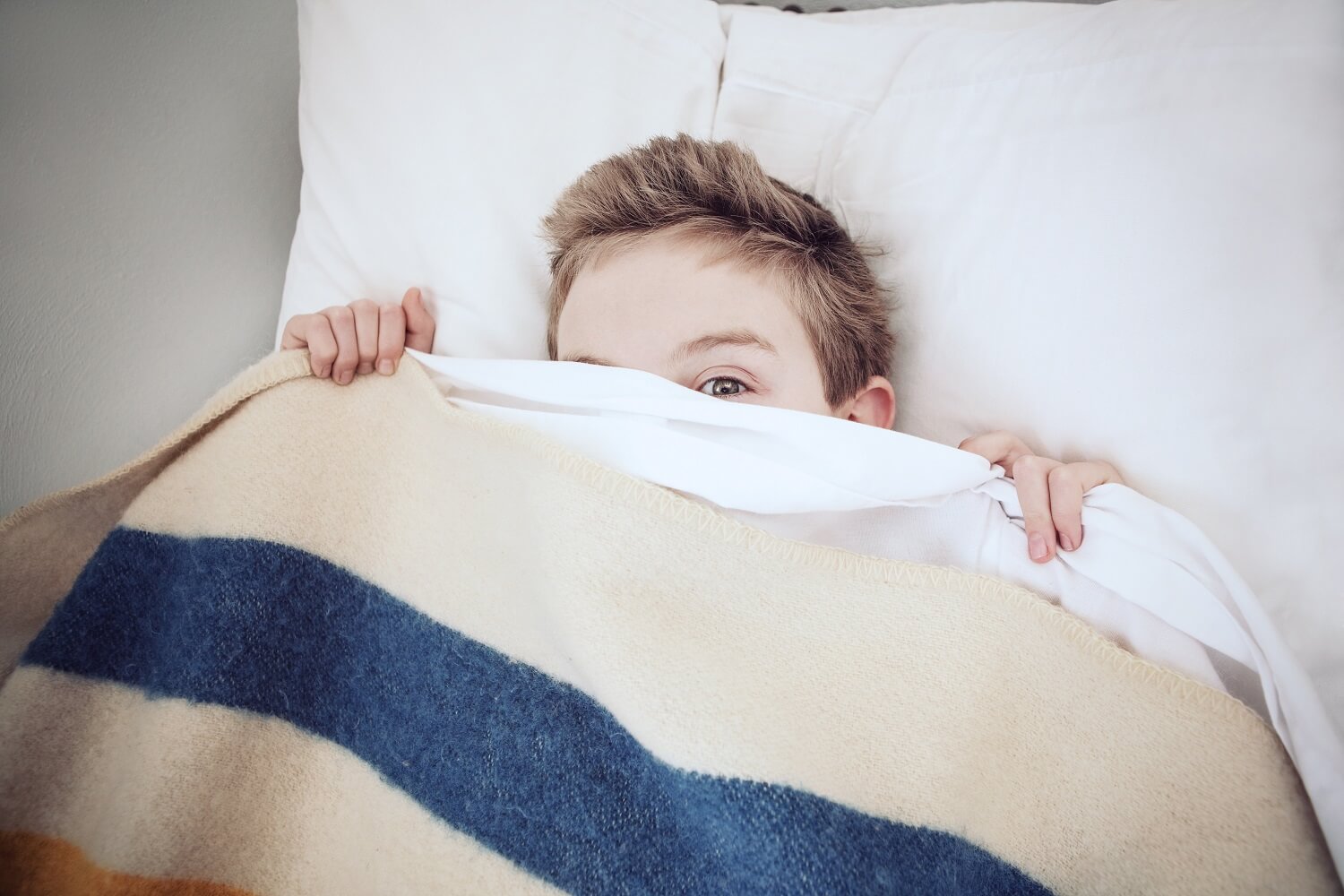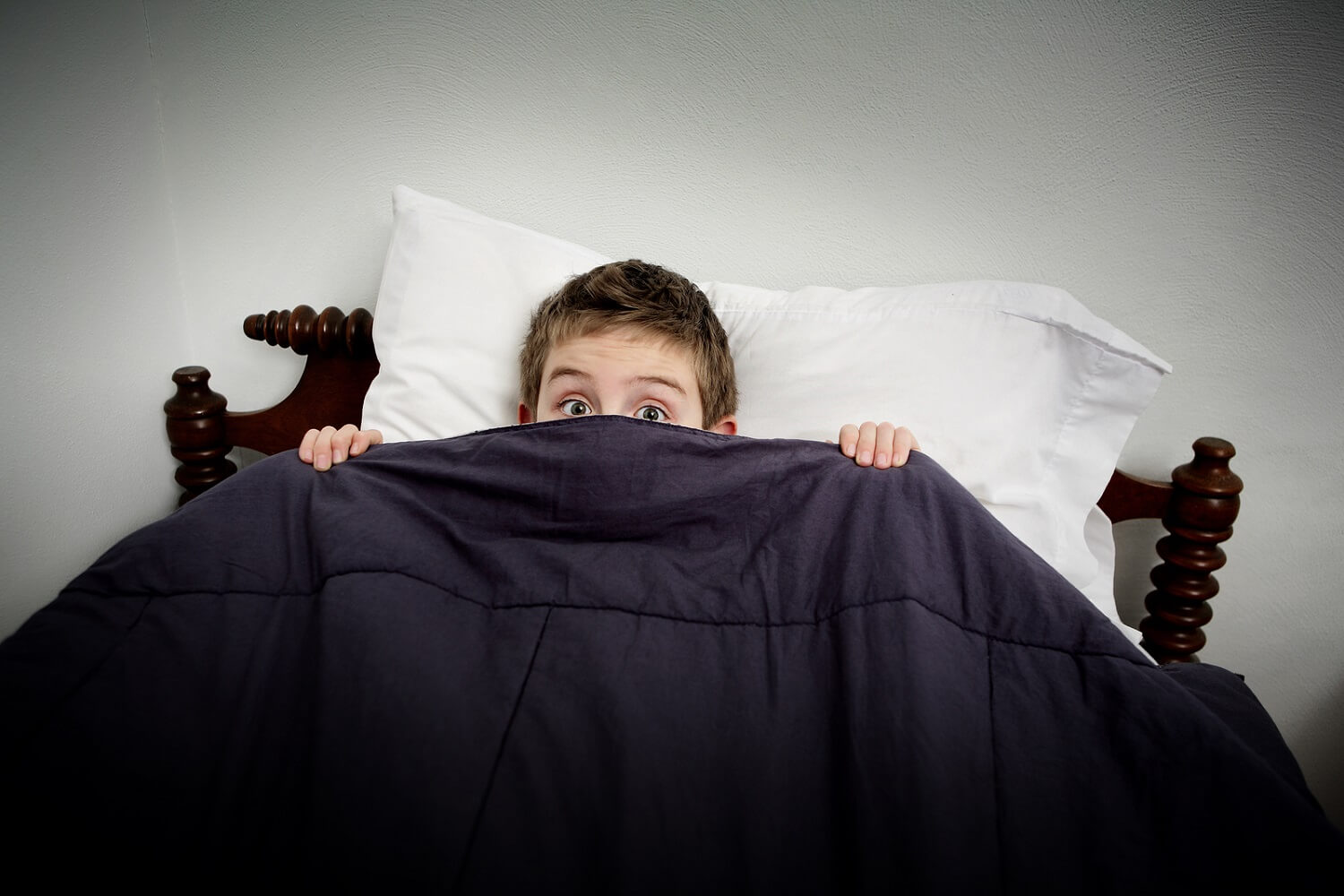What's the Difference Between Night Terrors and Nightmares?

How can you tell the difference between night terrors and nightmares?
Is your child not sleeping well at night and you don’t know what to do? Does he or she wake up screaming or do they sleepwalk as if they were having a nightmare?
During sleep, both adults and children go through different phases and we can both experience night terrors or nightmares. We’ll explain the difference below.
Night terrors are mysterious; they’re inexplicable disorders that can occur when your child is in the deepest phase of their sleep.
It has most likely occurred when your child starts crying after falling asleep or if they get up from their bed looking shocked.
There are even cases where the child has their eyes open and appears to be awake even though they’re actually asleep. (They are unaware of what is going on around them).
Night terrors aren’t very common and they only occur in a small percent of children. It occurs in around 3% to 6% of children all around the world.
Although some children present night terrors around the age of 18 months, the majority of children begin to experience this disorder around the age of 4 or 5.

Differentiating night terrors from nightmares
Some cases of nightmares may be confused with night terrors. The two are actually very distinct sleeping disorders. Nightmares occur during the rapid eye movement or REM sleep phase, which is when the child is dreaming.
If your child has a nightmare, they’ll most likely remember what they dreamt about and what made them so afraid. This only occurs after the child learns to speak and communicate.
Night terrors on the other hand occur outside the REM sleep phase. A child can experience night terrors when they’re still in the transitional phase of their sleep.
It may last for a couple of seconds or several minutes. Since night terrors occur outside the REM sleep phase, the child may not be aware of what is going on. They’ll wake up feeling scared without remembering what occurred in their dream.
What are the causes and symptoms of night terrors in young children?
Causes of night terrors
Your child’s night terrors may be caused by many different reasons including the following:
- Being sick or having a fever.
- Stressful events during the day.
- Not sleeping well or sleep deprivation.
- Anesthesia administered during a surgery.
- Medications that have effects on the brain or central nervous system.
Signs that your child is suffering from night terrors
Night terrors are more common in preschoolers. They usually occur during the deepest part of your child’s sleep cycle, usually right after they get to sleep.
You can confirm that your child is suffering from night terrors if you notice any of the following signs:
- Uncontrollable crying.
- Punches, shouts or kicks.
- Stunned expressions.
- It seems like they’re fighting when they’re asleep.
- They shake, sweat or breathe quickly while asleep.
- They don’t recognize you even when their eyes are open.

Night terrors can last for several minutes. In rare cases, long episodes can last for as much as 45 minutes.
After your child wakes up from their night terrors they’ll most likely be able to return to sleep peacefully. When they wake up the next morning, they’ll have no recollection of what happened.
If your child experiences a nightmare on the other hand, they’ll have a hard time getting back to sleep due to the fear of the nightmare. When they wake up the next morning they’ll most likely remember the details of their nightmare.
When it comes to nightmares, it’s important for your child to feel like they’re safe with you. It was just a dream. When it comes to night terrors, you should come to their aid without necessarily waking them up.
Remove all of the things that are on their bed that could hinder their movements or cause them to get hurt during a night terror episode.
All cited sources were thoroughly reviewed by our team to ensure their quality, reliability, currency, and validity. The bibliography of this article was considered reliable and of academic or scientific accuracy.
- Consejo de Salubridad General, & Gobierno Federal. (2010). Diagnóstico y Tratamiento de los Trastornos del Sueño. Secretaría de Salud de México.
- Covertini, G., Krupitzky, S., Tripodi, M. R., & Carusso, L. (2003). Trastornos del sueño en niños sanos. Arch.Argent.Pediatr. https://www.sap.org.ar/docs/archivos/2003/arch03_2/99.pdf
- Crisp, A. H., Matthews, B. M., Oakey, M., & Crutchfield, M. (2009). Sleepwalking, night terrors, and consciousness. BMJ. https://doi.org/10.1136/bmj.300.6721.360
- Pedreira JL, Martín-Alvarez L. (2001). Trastornos del sueño en la infancia. Rev Psiquiatr Psicol Niño Adol 2001; 3(1):1-15
- Taylor, A. (1993). Night terrors. Journal of Contemporary Psychotherapy. https://doi.org/10.1007/BF00952172
This text is provided for informational purposes only and does not replace consultation with a professional. If in doubt, consult your specialist.
